Teriyaki Chicken Bowl Recipe: Temperatures for a Safe Dish
Teriyaki chicken bowls hold a special place in my heart. I know they’re not “high-class” food, but I don’t care. They’re delicious, and they are incredibly nostalgic. They are the food of the hungry teen, the hurried student, the frantic parent who needs to keep their kid’s mouths full for just a few minutes of blissful quiet.
Here, we want to help you find a way to bring that comforting, familiar flavor home, and even improve on it a bit. We’ll leave the rice to you, but we’ll cover the veggies and, most importantly, the chicken. This is a dish where thermometers are essential. You really can’t tell if the chicken is done and safe to eat without one! Let’s get cooking.
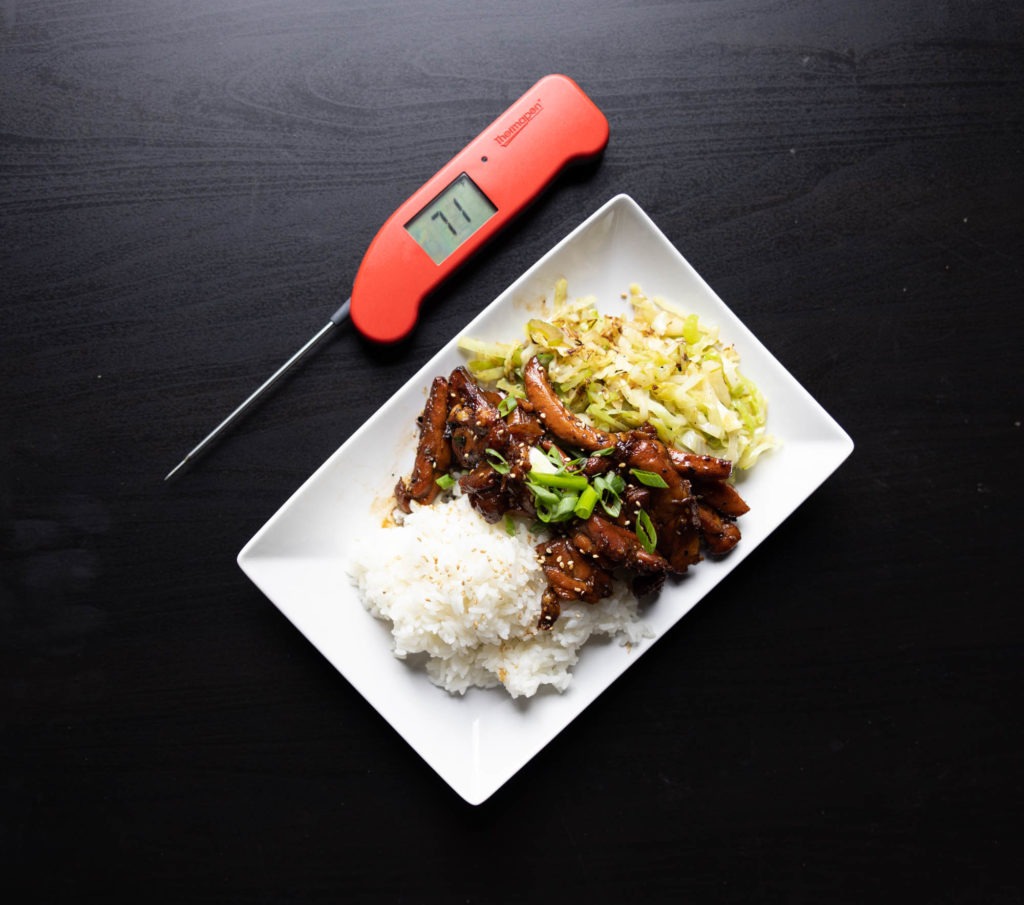
What we expect from a teriyaki bowl
One of the beautiful things about the teriyaki bowl is its simplicity. A good teriyaki bowl has three things: white rice, saucy-browned chicken, and that tangle of cabbage and celery. That mess of vegetables feels like a nod to vegetables, but it doesn’t get in the way of what we want.
Achieving teriyaki bowl excellence: the chicken
To get the chicken saucy and caramelized we’ll marinate it for a short while in teriyaki sauce. If you like, you can make your own sauce from soy sauce, mirin, and sugar or honey. I honestly don’t mind using a store-bought sauce. Just make sure it isn’t gloopy and thick—it should pour easily and be quite thin. Tossing the sliced chicken with this sauce while you prepare your other ingredients will make your chicken shiny and tasty when cooked.
Though not necessary, I like to dress the chicken up a little in the marinating stage. A couple cloves of minced garlic and some sliced scallions add depth of flavor as well as visual interest to the final dish. Are these “authentic” to the cheap fast teriyaki bowls we’re recreating? Maybe not, but that is just fine!
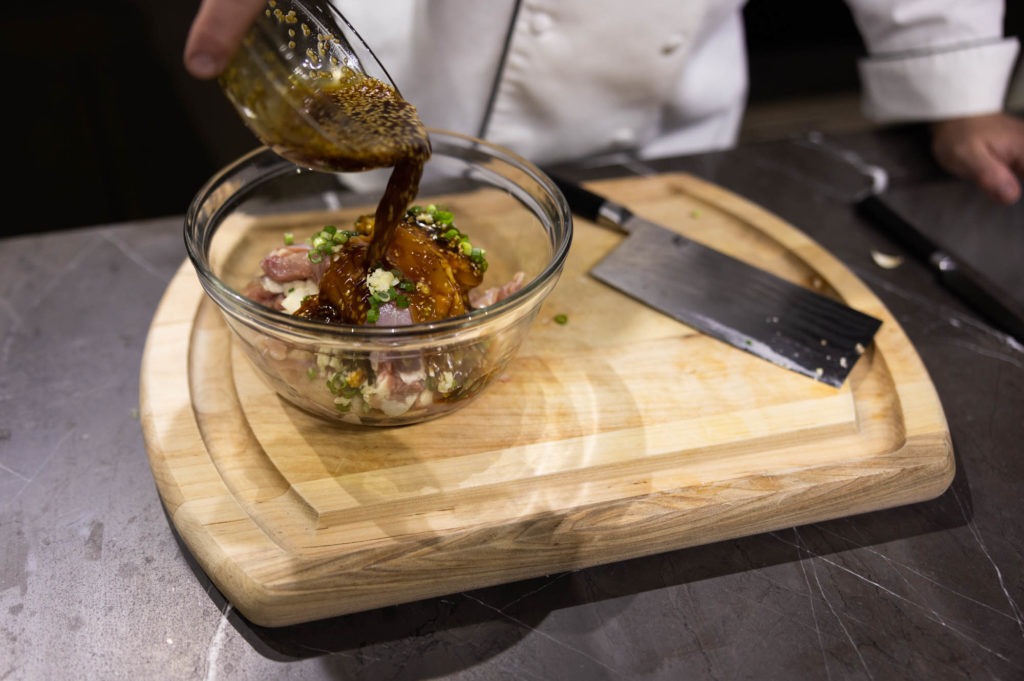
Cooking the chicken in small batches in a cast iron pan is the best way to go for this dish unless you have a large flat top griddle that can really pump out the heat. If you overcrowd the pan, you won’t get that lovely caramelization from the sauce. You’ll just stew and steam the chicken in its own juices. Just pour each batch of chicken into a serving bowl and cover it while you cook the next batch. You should wipe or rinse your pan out a little between batches to keep from accumulating lots of burnt bits. Add fresh oil for each batch.
After cooking your last batch of chicken, pour the remaining marinade and accumulated chicken juices into the hot pan and cook them. Once boiled and somewhat thickened, reintroduce the cooked chicken. Toss it all together in the sauce and put it back in the serving bowl.
The veggies
The tangle of cabbage can also be improved. Sauté some thin-sliced onion, some celery, and some garlic until they just start to color in the pan, then stir-fry the cabbage on top of that flavor base. Cooking it over very high heat will caramelize some of the cabbage, and you do want that.
Make the stir-fried cabbage in another pan while the chicken cooks or use the same pan after the chicken is done. Wipe it out well, heat some new oil, including a few drops of sesame oil, and start cooking the veggies when the pan is hot.
Is temping the chicken for teriyaki really necessary?
One thing we definitely don’t want from a teriyaki bowl is salmonella. And that means we need to take the temperature of our chicken to make sure it’s over 165°F (74°C).
Look, I’m not saying the people slinging chicken at the teriyaki restaurants aren’t good at their jobs but have you ever seen them take the temp of one of those little pieces of chicken? I haven’t! The general assumption seems to be that pieces so small are easy to tell when they’re cooked through. Untrue! the combination of a hot cooking surface and the sugary marinade makes for easy caramelization that can be mistaken for doneness. Take a look at the image below:
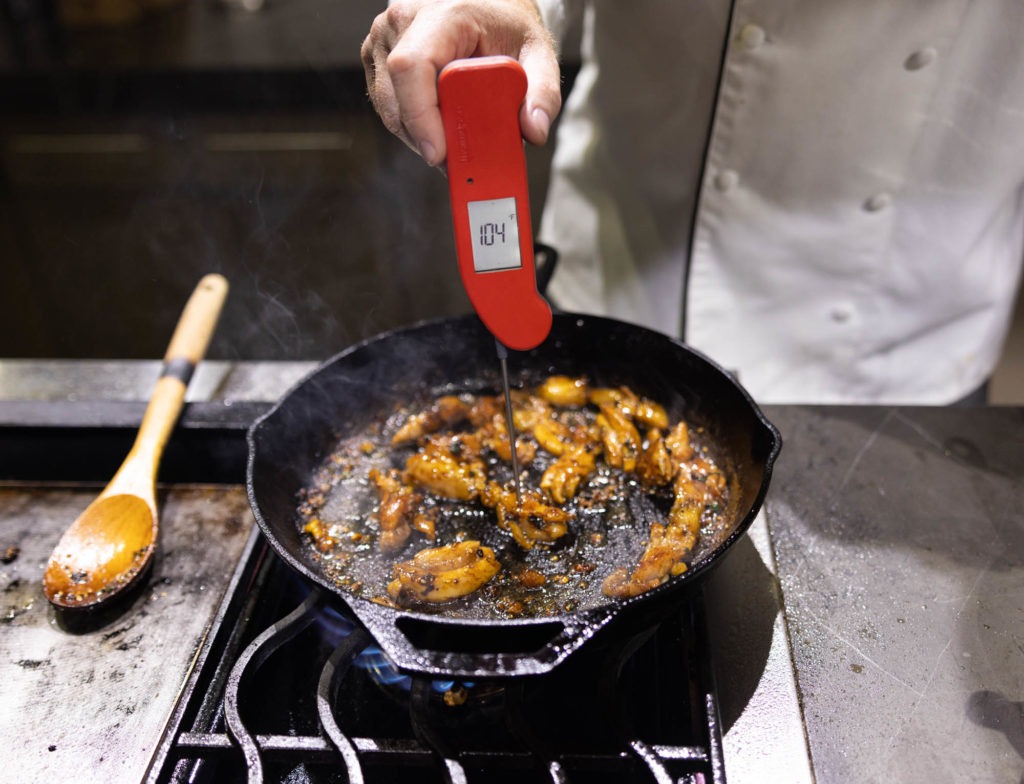
That chicken looks done. It has lovely browning and little charry bits from the sauce, but its internal temperature is a barely-warm 104°F (40°C). That’s not done! This is the kind of thing that always gives me pause when I consider getting teriyaki chicken bowls.
This is where Thermapen® ONE really shines. The tiny sensor in the tip of the probe allows you to take the temperature in cuts of meat that are usually too small to temp. That means that you can not only cook your chicken until it’s browned, but actually until it’s safe.
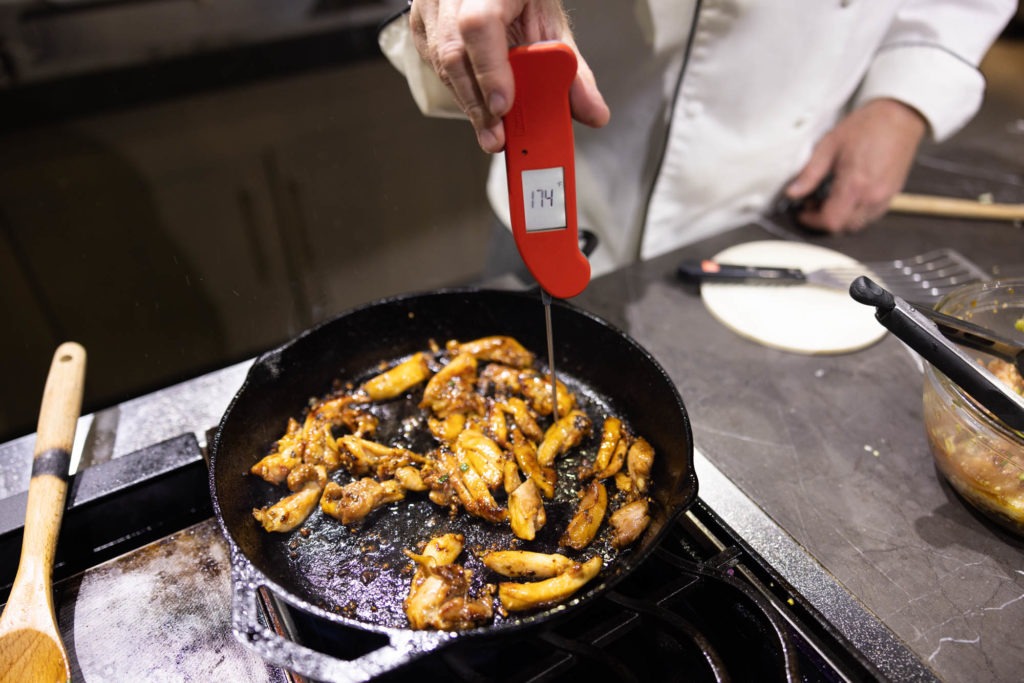
What meat to use for teriyaki chicken
Note that we’ve used chicken thigh for this, which you should also do. Chicken breast cut into bite-size pieces will dry out in this application. Thigh, on the other hand, not only stays juicy, but gets tastier when it’s cooked to higher temps. 175°F (79°C) is our target temp, but anything over 170°F (77°C) is going to be good.
Though it may not be high-class, the teriyaki chicken bowl holds an important place in our food culture, and it’s a technique you should have in your back pocket to use at any time. A hearty, filling bowl of chicken and rice will always be welcome! And by making the slight improvements we’ve discussed, and cooking it to a truly safe temperature by using Thermapen ONE, you can get enjoy it at the comfort of your family table for a fraction of the cost of eating out.
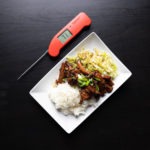
Teriyaki Chicken Bowl Recipe: Temperatures for a Safe Dish
Description
Basic, delicious, nostalgic teriyaki chicken bowls.
Ingredients
For the chicken:
- 6 boneless/skinless chicken thighs
- ~1 C teriyaki sauce, purchased or homemade
- 2 cloves garlic, minced
- 3 scallions, chopped fine
- Neutral, high-heat oil for cooking (grapeseed, for instance)
For the vegetables:
- 1 very small head of cabbage (you may not even use all of it), shredded
- 3 celery sticks, finely sliced
- 1 clove garlic, minced
- 1 small onion, finely sliced
- More oil for cooking
- 1/2–1 tsp sesame oil
- Salt and pepper to taste
Cooked white rice for serving, scallion and sesame seeds for garnish
Instructions
- Prepare rice according to your preferred method.
- Slice the chicken thighs into bite-sized strips, about 1/2″ wide.
- Toss the chicken with the sliced scallions and garlic. Stir in the teriyaki sauce. Set aside.
- prepare the ingredients for the cabbage. Combine the onion, celery and garlic in a bowl. Have the cabbage ready.
- Add about 1–2 Tbsp neutral oil to a cast-iron pan and heat over high heat.
- When the pan is very hot—nearing 400°F (204°C)— add about 1/3 of the chicken to the pan.
- Allow the chicken to sit still in the pan for a couple minutes. This will encourage browning and searing on the pan-ward side.
- Stir the chicken, then let it sit for another minute or so to brown more.
- Stir-fry the chicken, pausing to check the internal temperature with your Thermapen ONE as you do so.
- When you no longer find any temperatures below 175°F (79°C), pour the chicken into a serving bowl. Cover.
- Carefully wipe out the pan and add more oil, reheat the pan, and cook the next batch of chicken. Continue until all the chicken is cooked.
- Pour the sauce and juices from the chicken marinating bowl into the pan and boil for a few moments, allowing the sauce to thicken somewhat.
- Pour all the chicken back into the pan, toss to coat with the sauce. Pour everything back into the serving bowl. Cover.
- Clean the pan out well. Add 2 Tbsp neutral oil and the sesame oil to the pan. Heat over medium-high.
- Add the onion/celery/garlic mixture and sauté until just starting to brown.
- Add a few handfuls of cabbage to the pan as well as a large pinch of salt. The bottom of the pan should be covered in cabbage, but not too thickly.
- Allow to cook for a minute or two to brown, the sautee by stirring and cooking. When the cabbage is browned somewhat and has the texture you like, remove it from heat.
- Serve the chicken, cabbage, and rice to your adoring family. Bask in the silence as they eat too quickly to talk.
Shop now for products used in this post:


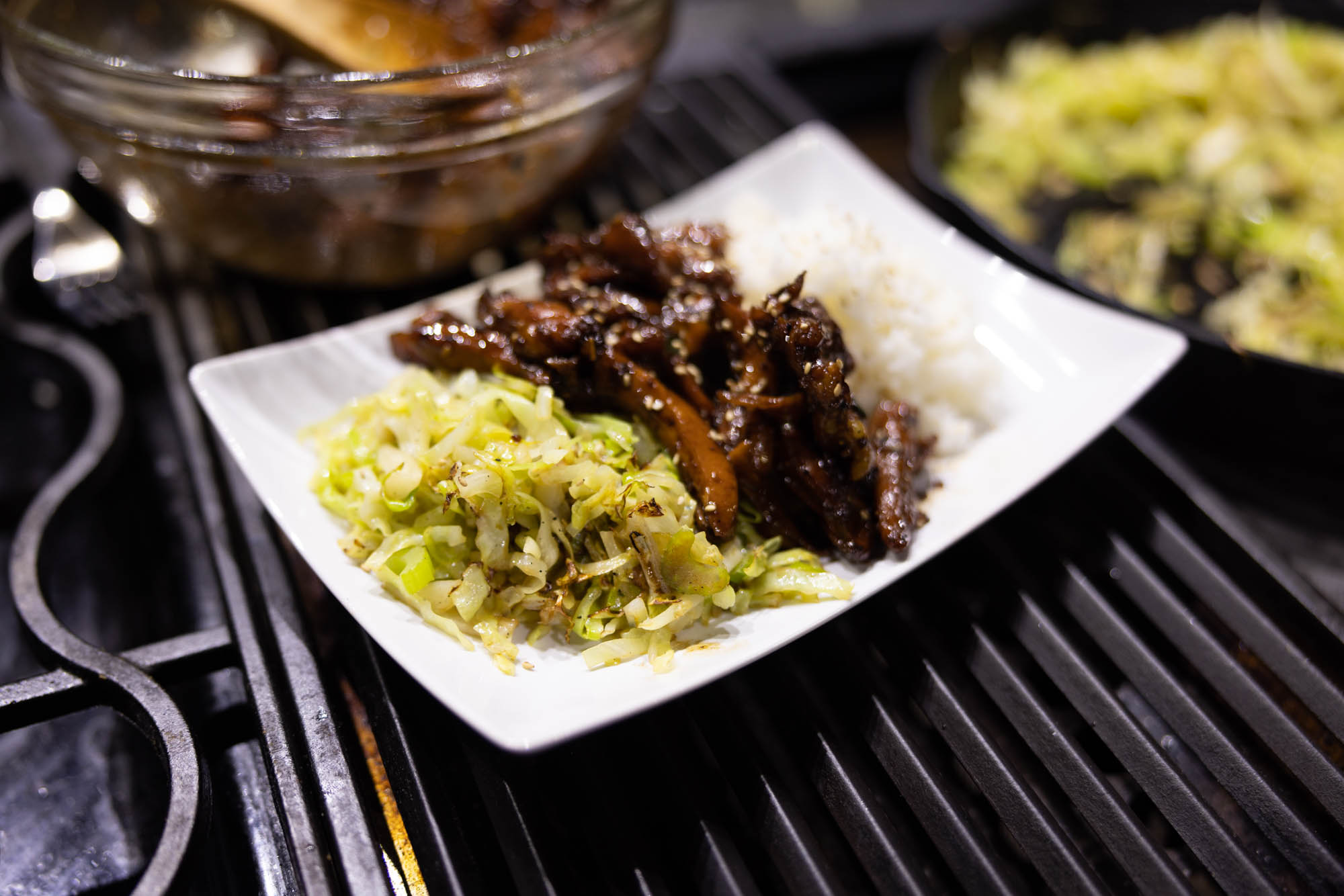
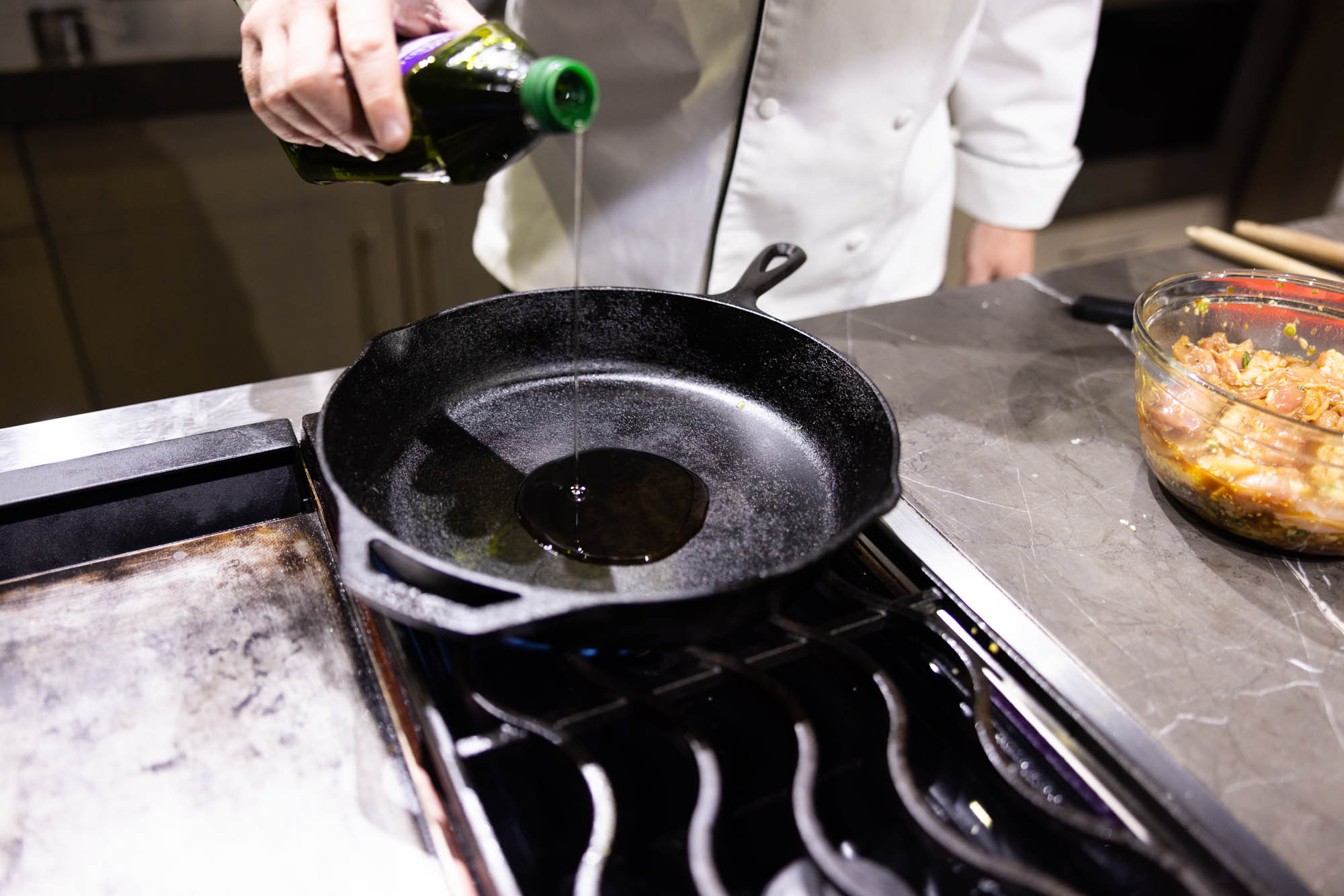
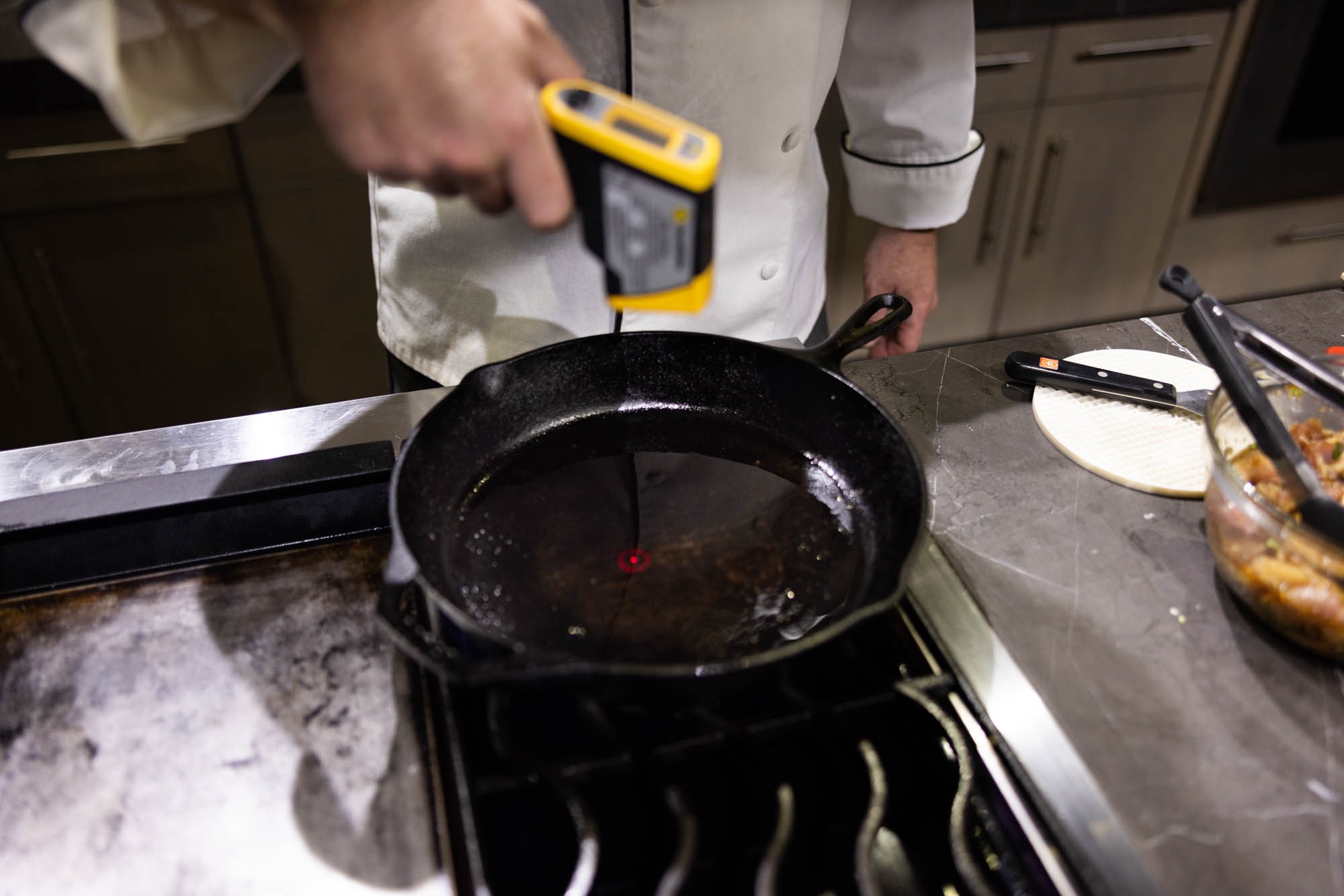
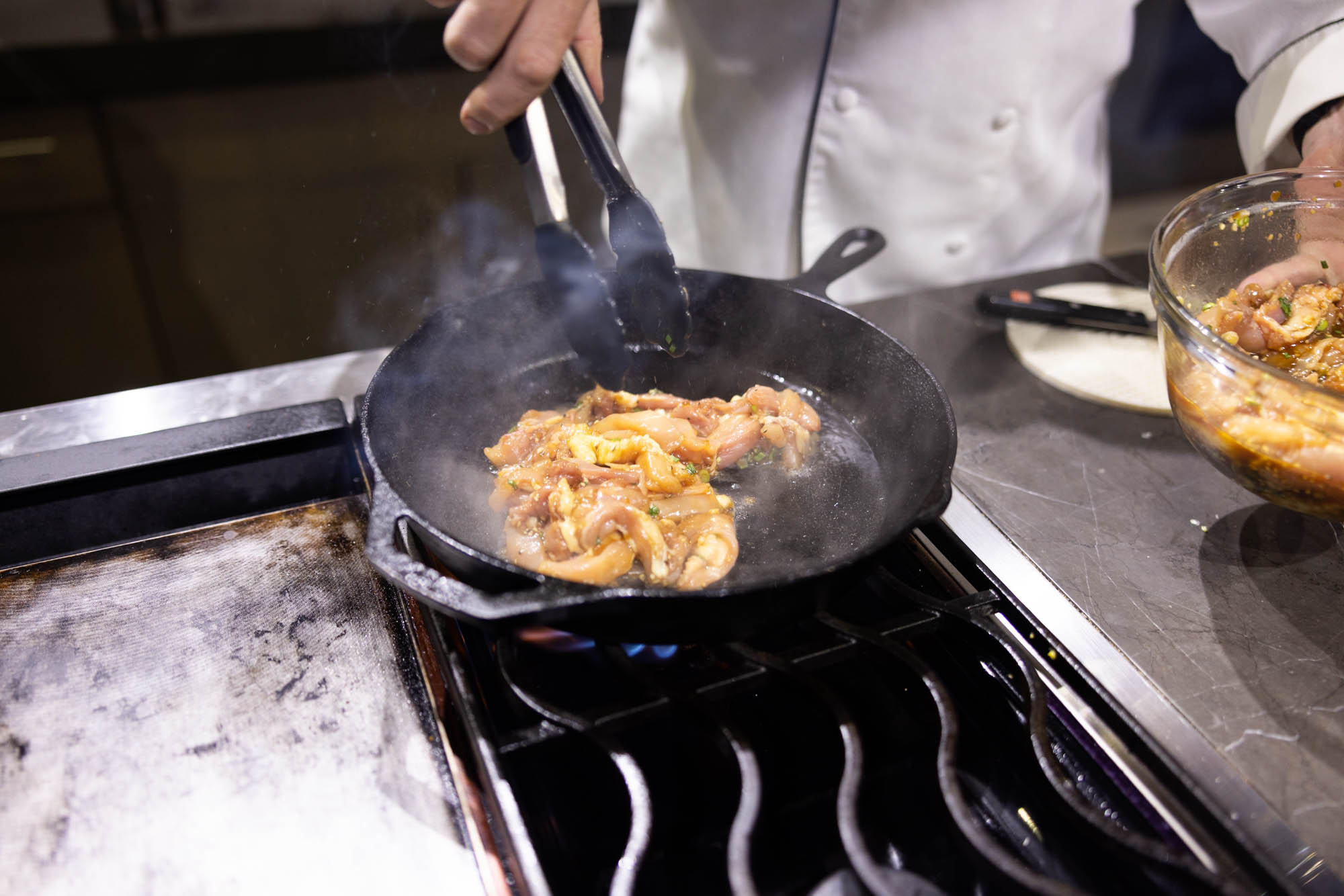
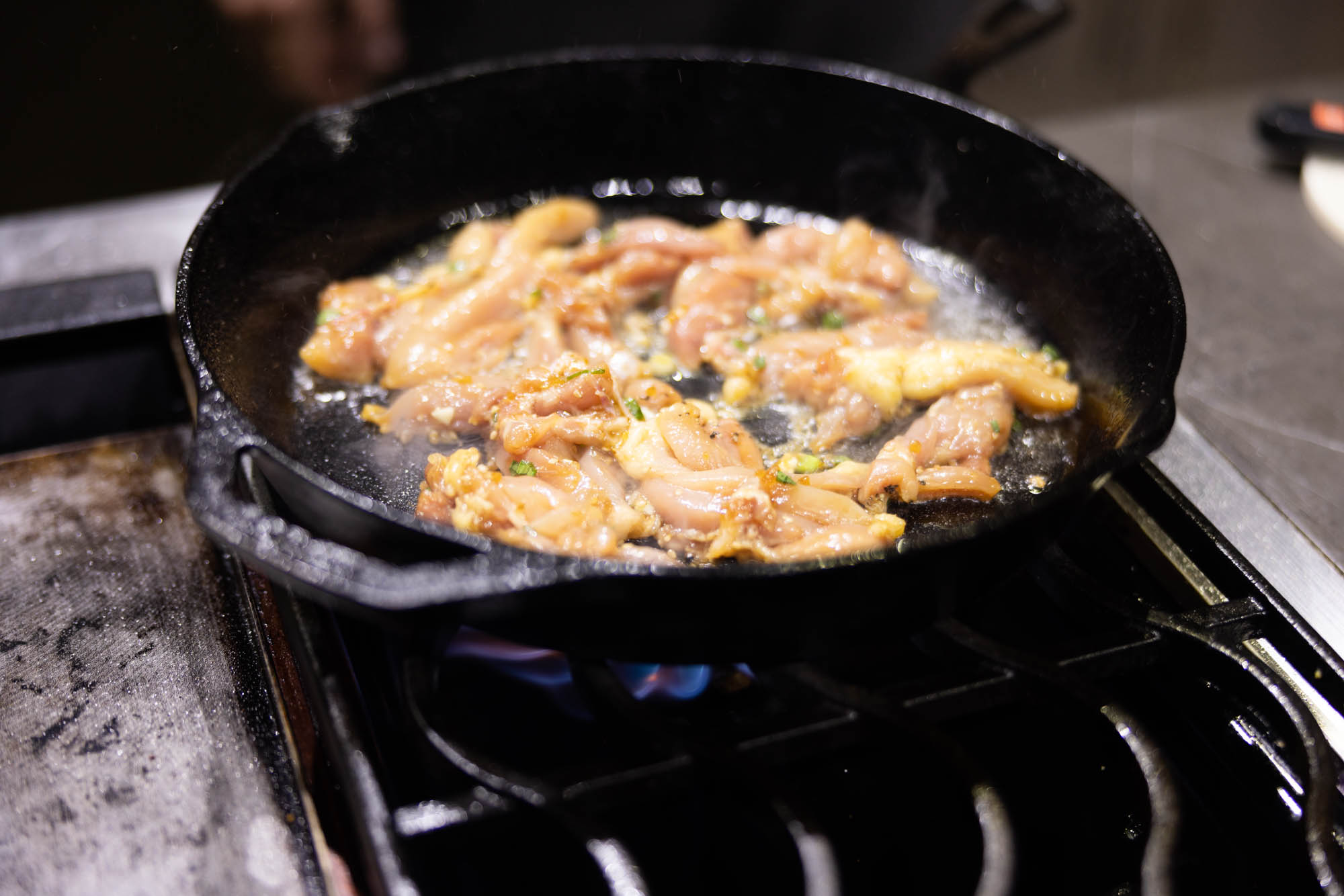
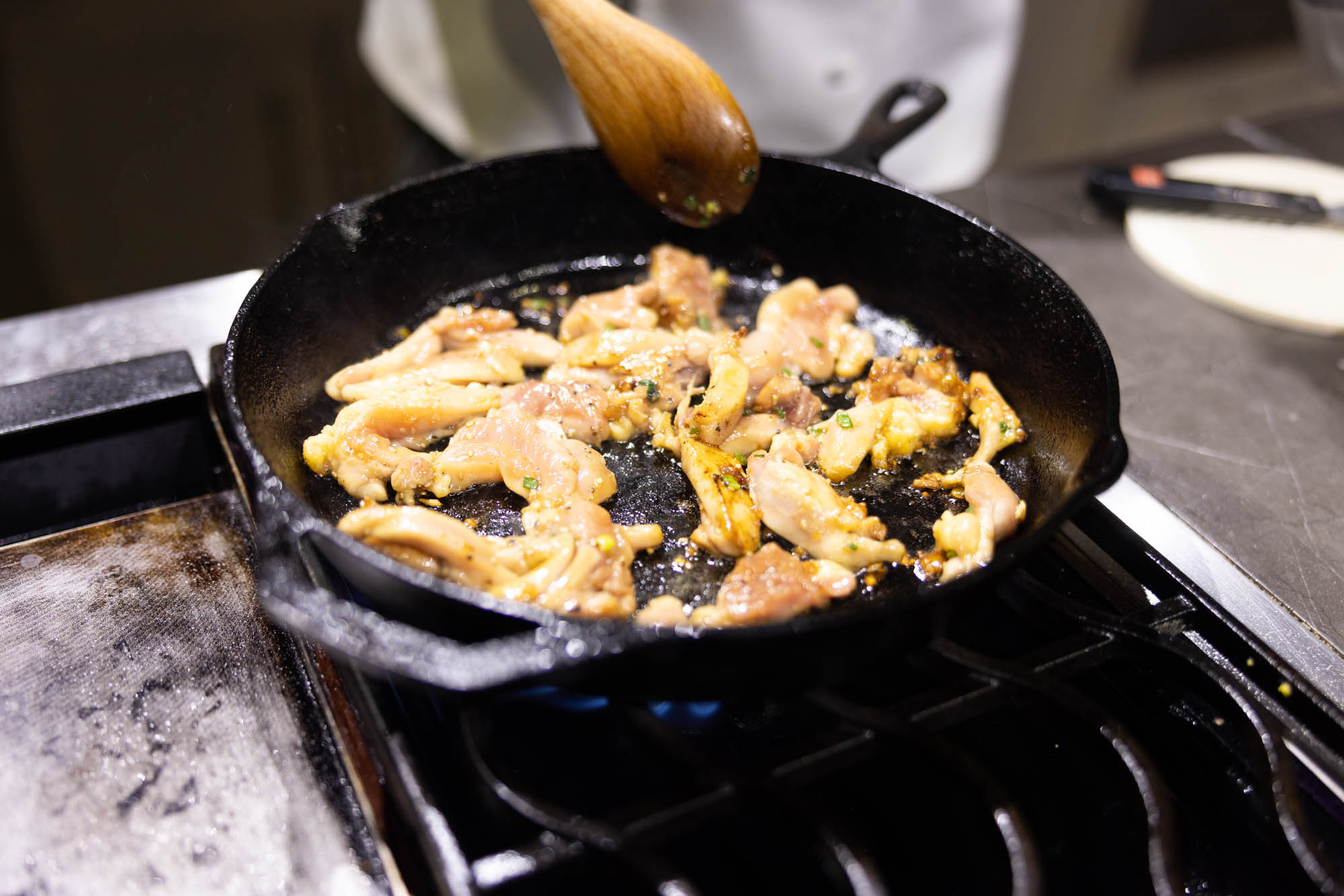
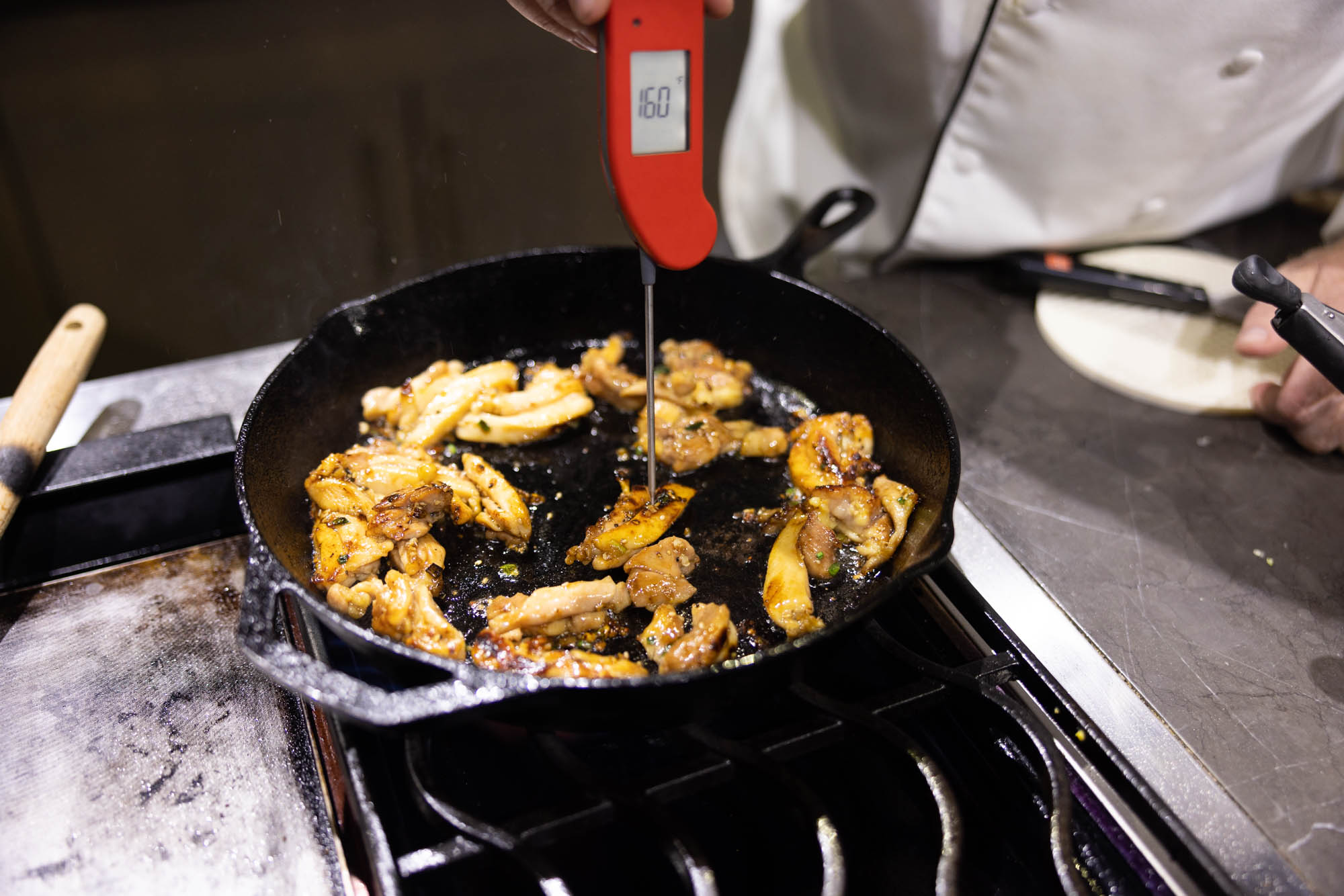
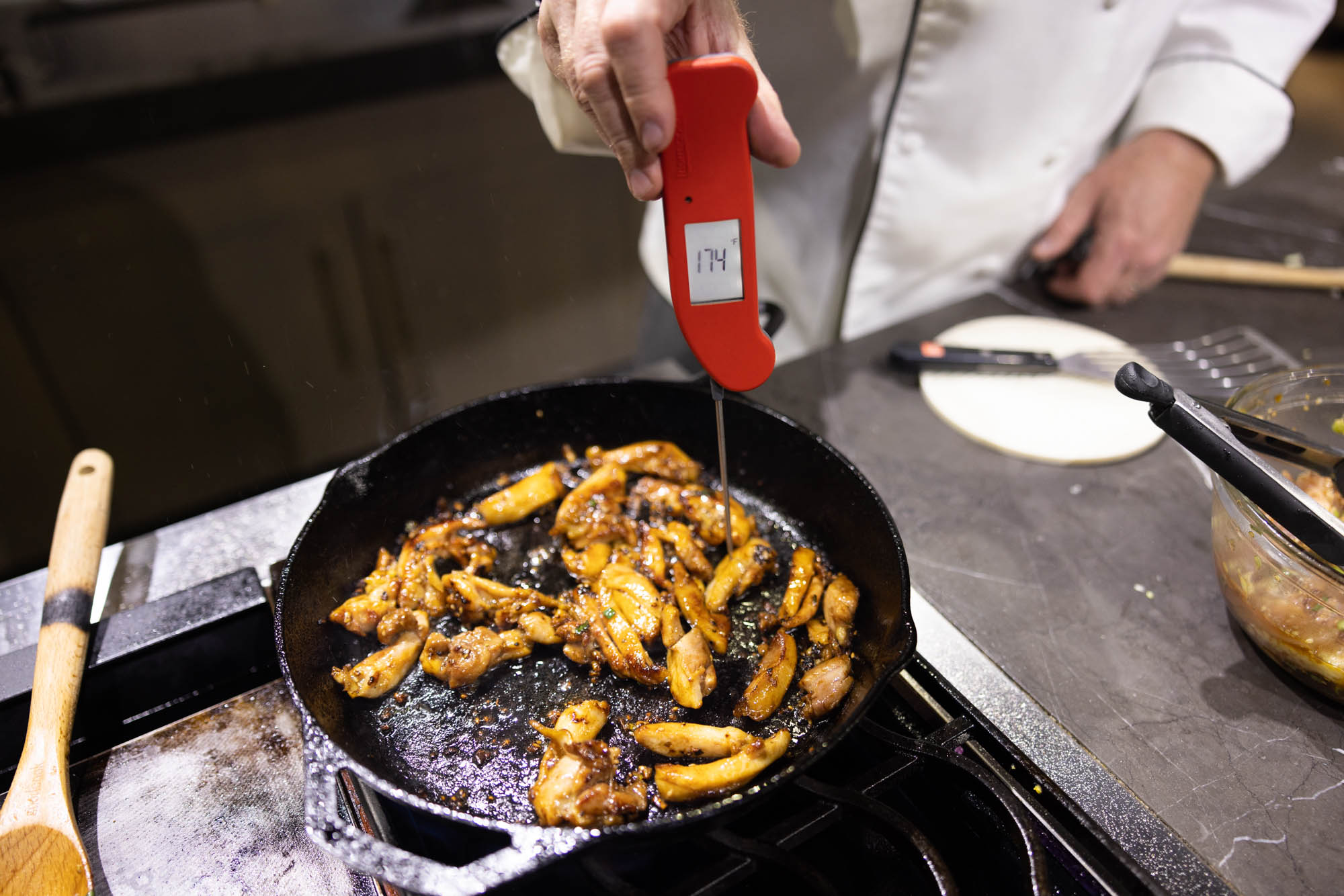
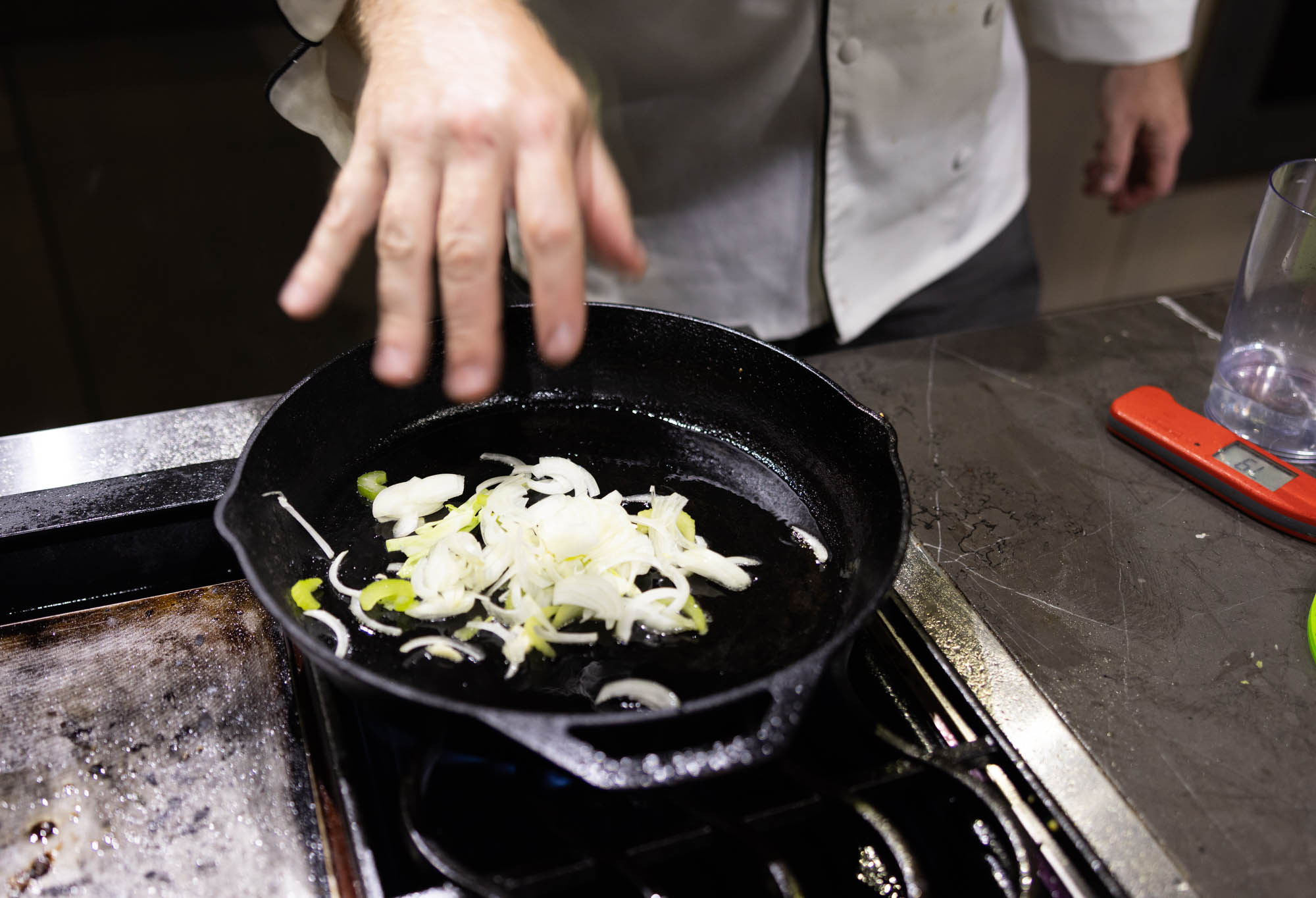
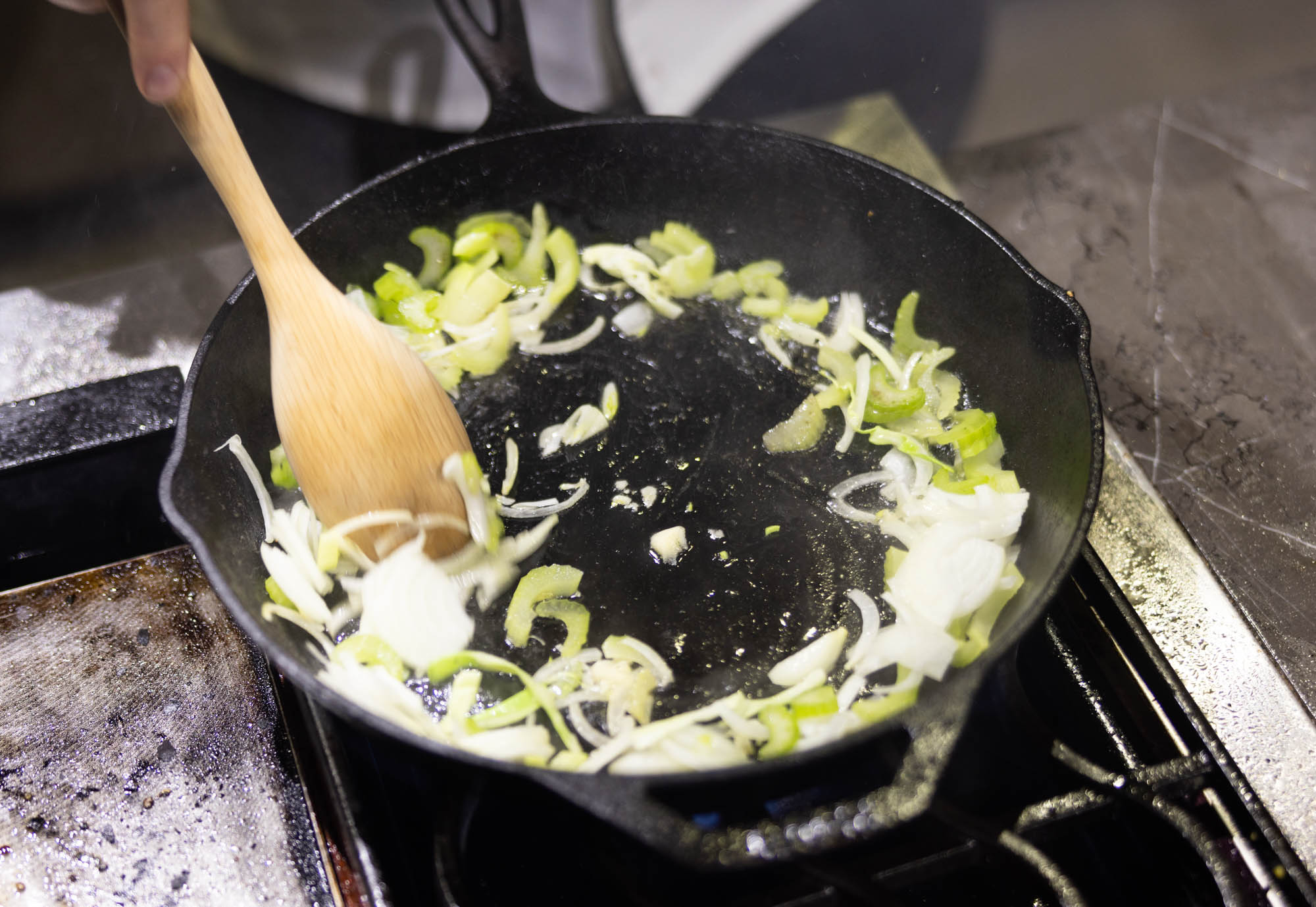
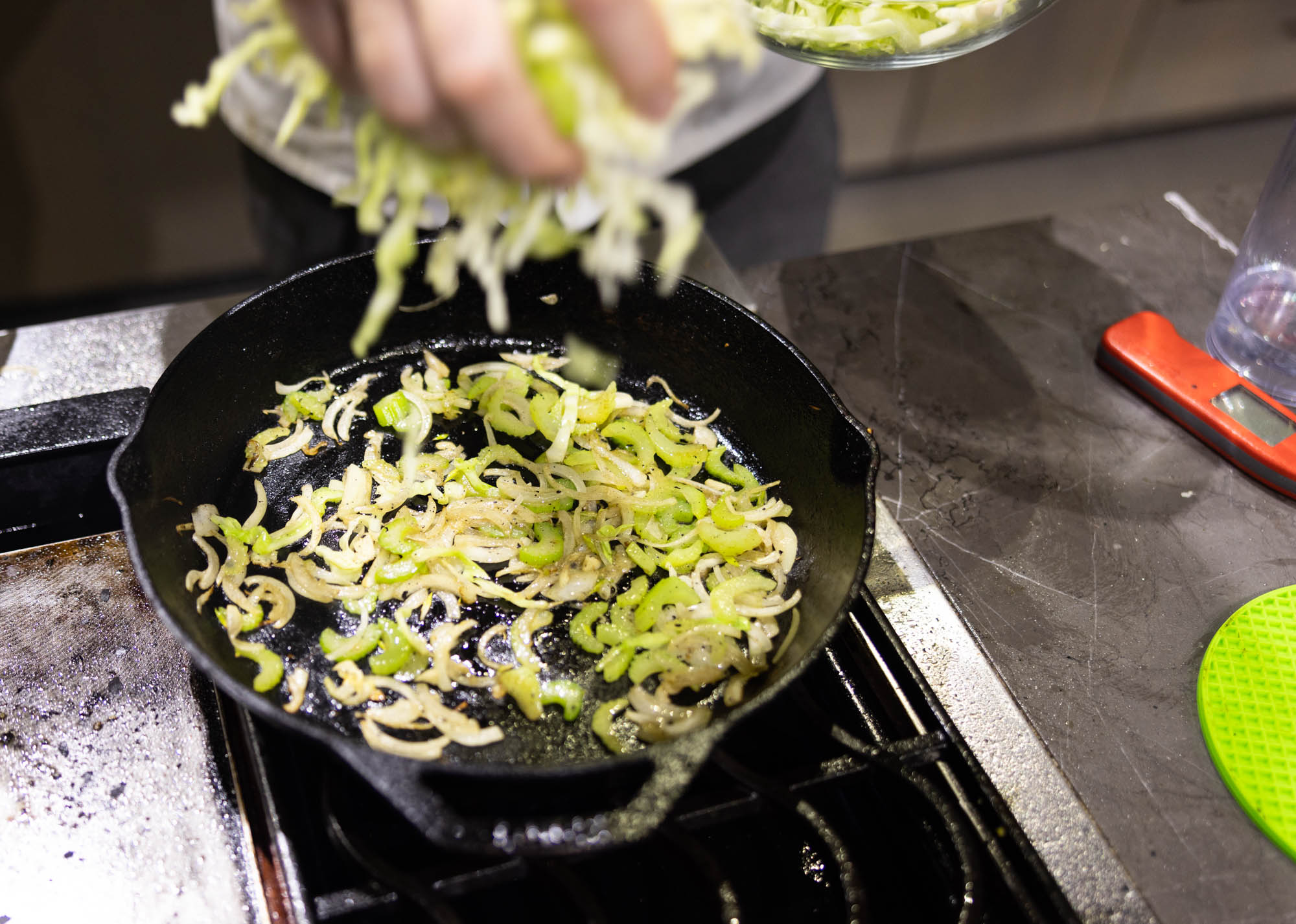
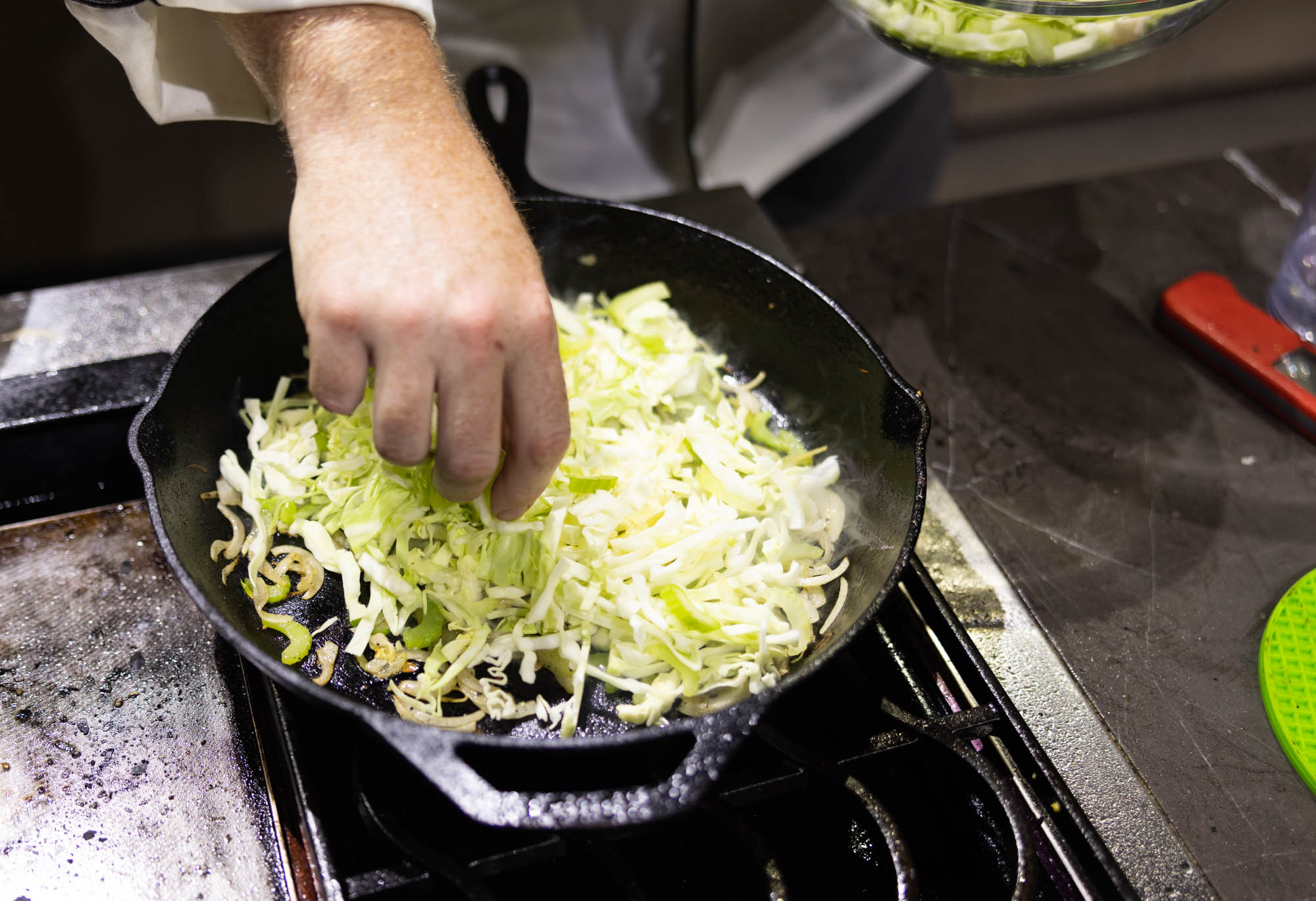
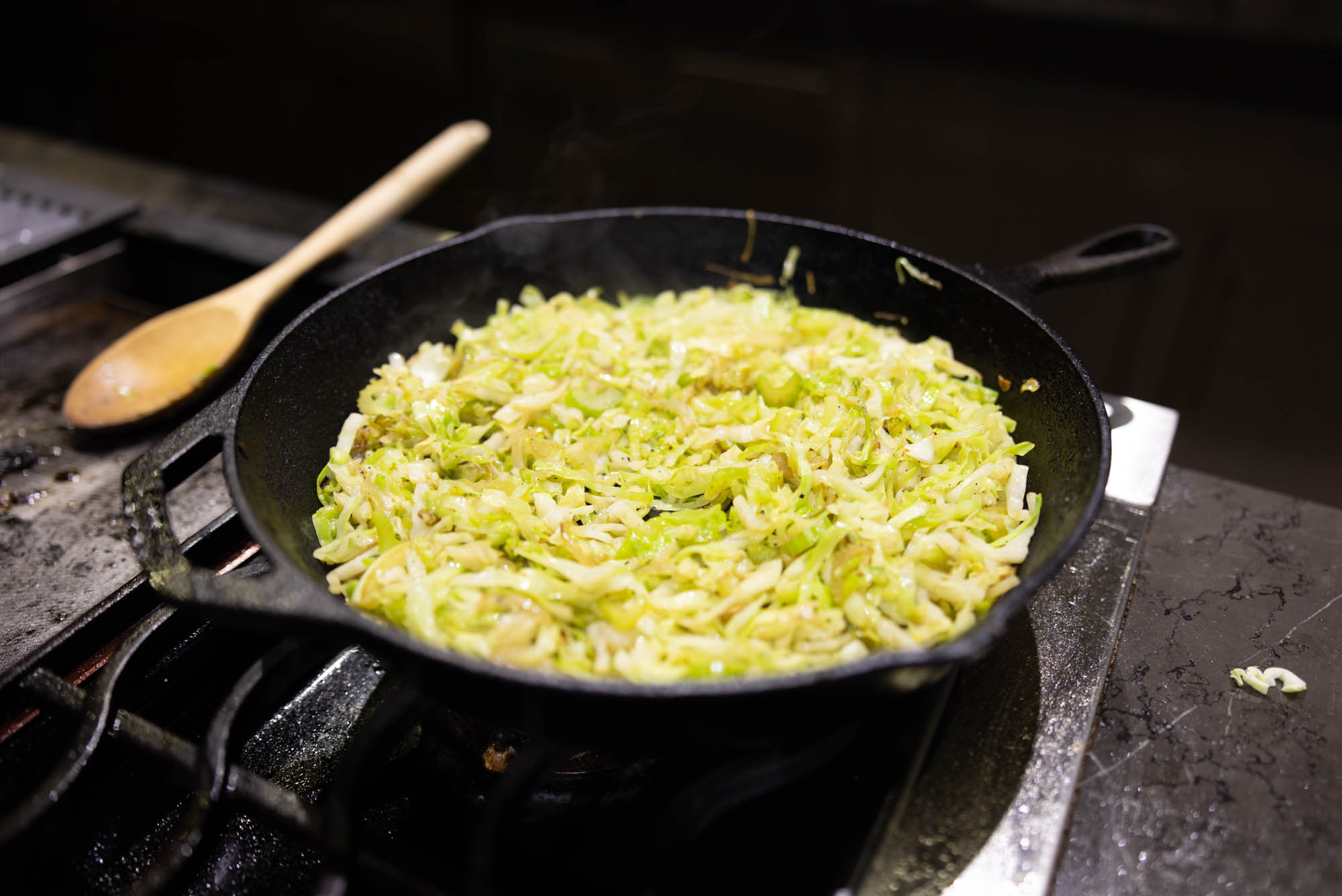
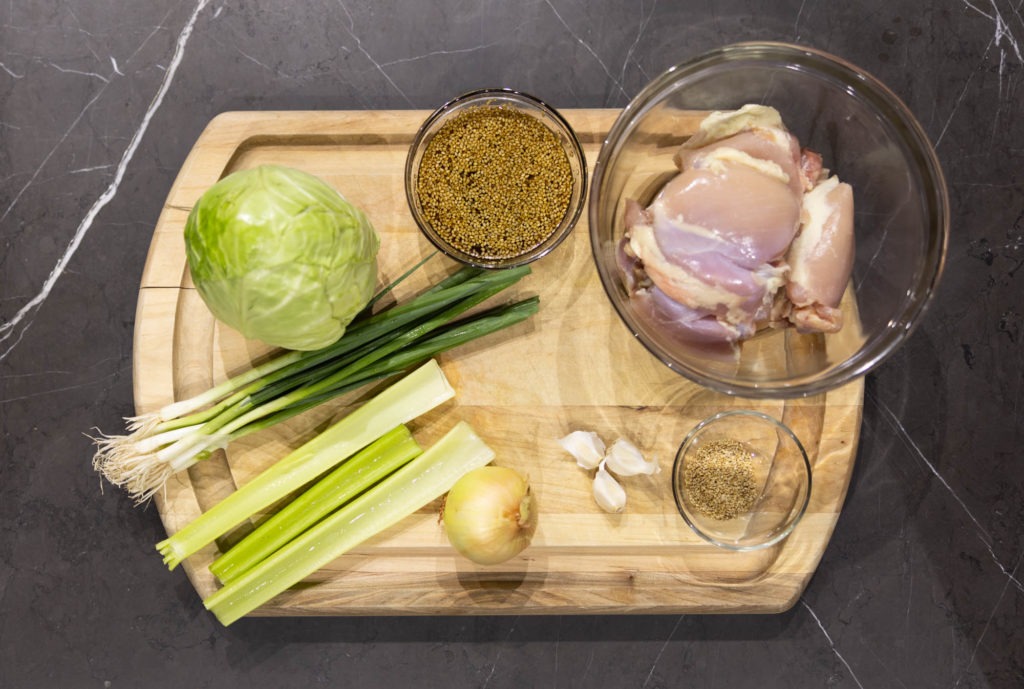
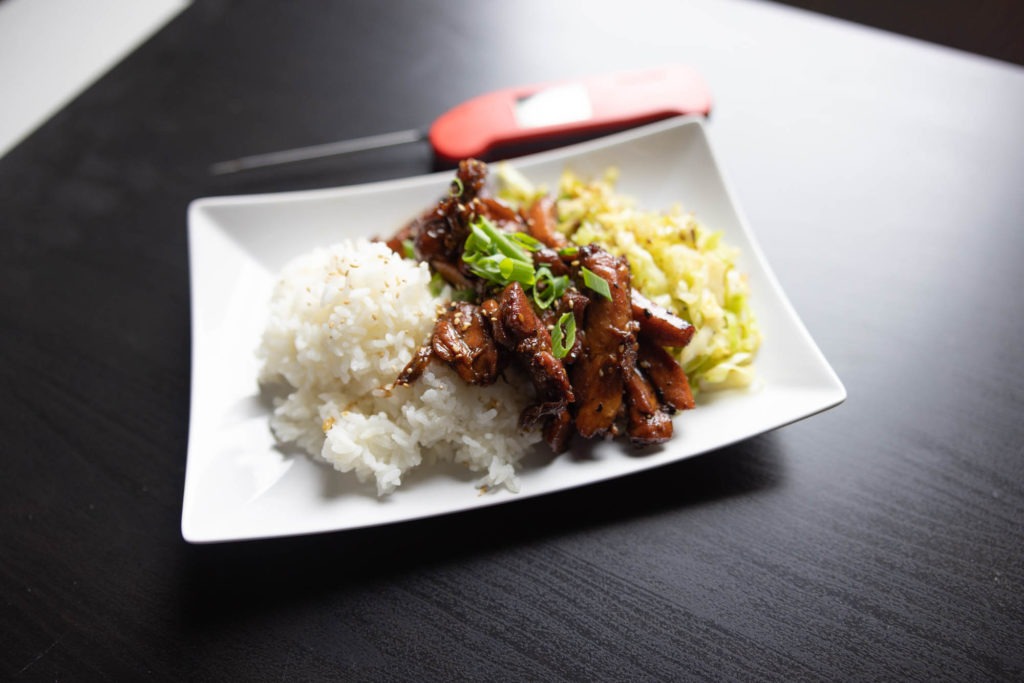

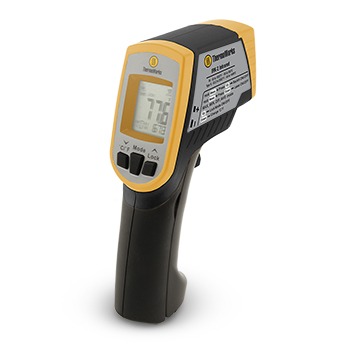
Nice easy recipe; we like to add fresh ginger along with the garlic. On a technical note, it would be great if the “print recipe” option would omit the photos and huge header, so the recipe easily fits on one page. We’re old school and like to print recipes that are keepers, but we don’t need photos, especially since it uses up expensive color ink. Thanks!
This is one of the best teriyaki chicken recipes I’ve seen, and I will be trying it very soon. One of our family is soya sensitive so I will try an aminos substitute.
This looks like a great recipe, and I intend to try it. Given your interest in food safety, you should know that the USDA recommends boiling the marinade for five full minutes to make sure it is safe to eat.
loved the recipe!
It was a real hit around here! serving it again tonight with coconut milk in the rice with vegies mixed in. You were right though I used a stainless fry pan and couldn’t clean the fry pan between cycles as you did. I needed a much cooler heat while following the temperature guidelines.